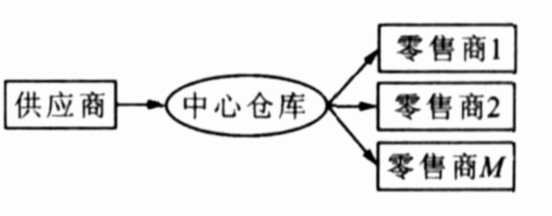Profit model and algorithm of distribution system for vendor managed inventory
-
摘要: 为了进一步提高分销系统的利润, 针对拓扑结构为一个分销商或供应商与若干个零售商的分销网络, 研究了在产品具有随机价格弹性需求时的系统优化问题, 采用各零售商处采用周期盘点的库存控制策略与供应商管理库存模式, 建立了分销系统利润优化模型, 设计了相应的求解算法。计算结果表明: 供货价格与正常批发价格的比值对模型最优解不产生影响, 随着商品零售价格的增加, 销售总量下降, 供应商的利润下降, 但是零售商的利润却上升了, 因此, 在确保系统总利润最大的前提下, 可通过合约的形式确定供货价格与正常批发价格的比值, 将零售商一定比例的利润转让给供应商, 从而激发供应商的积极性。Abstract: In order to increase the profit of distribution system, the distribution network was studied whose topology structure was one distributor or supplier and many retailers, the system optimization was analyzed when the product demand had stochastic price elasticity, retailer inventory control policy of cycle check and vendor managed inventory (VMI)mode were adopted, the profit optimization model and solving algorithm of distribution system were established. Calculation result shows that the ratio between supplying goods price and normal wholesale price doesn't affect the model optimal solution, total sales and suppliers' profits decrease with the increase of goods retail prices, but the retailers' profits increase. So the ratio between supplying goods price and normal wholesale price can be determined through the negotiation when total system profit is maximal, and suppliers' enthusiasm can be aroused when a certain proportion profit is transferred from retailers to suppliers.
-
表 1 模型主要参数
Table 1. Main parameters of model
参数 参数值 参数 参数值 参数 参数值 C/(元·件-1) 100 O1、O2、O3/(元·次-1) 60 λ2 2.8 Cw/(元·件-1) 80 Ow/(元·次-1) 80 λ3 2.5 D10/万元 3 954.60 U/(元·次-1) 150 σ1/件 4 D20/万元 1 742.90 h1、h2/[元·(件·d)-1] 0.10 σ2/件 5 D30/万元 481.72 h3/[元·(件·d)-1] 0.15 σ3/件 7 u/(元·件-1) 2 λ1 3.0 表 2 模型计算结果
Table 2. Calculation results of model
系统成员 分销系统 供应商 零售商1 零售商2 零售商3 α=1.2 利润/元 2 926.0 1 751.1 336.5 387.3 451.1 Sj/件 T=9 d 818 232 269 317 α=1.3 利润/元 2 977.6 1 396.4 443.8 518.8 618.6 Sj/件 T=10 d 747 208 244 295 α=1.4 利润/元 2 942.7 1 131.4 498.7 591.6 721.0 Sj/件 T=11 d 688 188 224 276 α=1.5 利润/元 2 859.9 930.5 521.6 627.3 780.5 Sj/件 T=11 d 592 159 192 241 -
[1] 杜文, 袁庆达, 周再玲. 一类随机库存/运输联合优化问题求解过程分析[J]. 中国公路学报, 2004, 17(1): 114-118. doi: 10.3321/j.issn:1001-7372.2004.01.027Du Wen, Yuan Qing-da, Zhou Zai-ling. Analysis of the process of stochastic inventory/transportation integrated optimization problem[J]. China Journal of Highway and Transport, 2004, 17(1): 114-118. (in Chinese) doi: 10.3321/j.issn:1001-7372.2004.01.027 [2] 陈治亚, 付延冰, 陆风山, 等. 企业供应链中库存与运输服务[J]. 交通运输工程学报, 2004, 4(2): 85-88. doi: 10.3321/j.issn:1671-1637.2004.02.020Chen Zhi-ya, Fu Yan-bing, Lu Feng-shan, et al. Stock and transport service of enterprise supply chain[J]. Journal of Traffic and Transportation Engineering, 2004, 4(2): 85-88. (in Chinese) doi: 10.3321/j.issn:1671-1637.2004.02.020 [3] Lee H, Padmanabhan P, Whang S. Information: distortion in supply chain: the bull whip effect[J]. Management Science, 1997, 43(4): 546-558. doi: 10.1287/mnsc.43.4.546 [4] Chen F, Drezner Z, Ryan J K, et al. Quantifying the bull-ship effect in a simple supply chain: the impact of forecasting, lead times and information[J]. Management Science, 2000, 46(3): 436-443. doi: 10.1287/mnsc.46.3.436.12069 [5] Clark T, Hammond J. Reengineering channel reordering processes to improve total supply chain performance[J]. Production and Operation Management, 1997, 6(3): 248-265. doi: 10.1111/j.1937-5956.1997.tb00429.x [6] Hol mstrom J. Business process innovation in the supply chain—a case study of implementing vendor managed inventory[J]. Europen Journal of Purchasing & Supply Management, 1998, 4(2/3): 127-131. [7] Cetinkaya S, Lee C Y. Stock replenishment and shipment scheduling for vendor-managed inventory systems[J]. Management Science, 2000, 46(2): 217-232. doi: 10.1287/mnsc.46.2.217.11923 [8] Dong Yan, Xu Ke-feng. A supply chain model of vendor managed inventory[J]. Transportation Research Part E, 2002, 38(2): 75-95. doi: 10.1016/S1366-5545(01)00014-X [9] 朱宏, 郭海峰, 黄小原. 供应商管理库存的利润模型及其优化策略[J]. 东北大学学报: 自然科学版, 2004, 25(5): 505-507. doi: 10.3321/j.issn:1005-3026.2004.05.027Zhu Hong, Guo Hai-feng, Huang Xiao-yuan. Profit model of vendor managed inventory andits optimized policy[J]. Journal of Northeastern University: Nature Science, 2004, 25(5): 505-507. (in Chinese) doi: 10.3321/j.issn:1005-3026.2004.05.027 [10] 郭海峰, 黄小原, 邱若臻. 供应商管理库存的最优购买数量和利润[J]. 东北大学学报: 自然科学版, 2005, 26(2): 186-189. doi: 10.3321/j.issn:1005-3026.2005.02.023Guo Hai-feng, Huang Xiao-yuan, Qiu Ruo-zhen. Optimized purchase quantity and profit of vendor managed inventory[J]. Journal of Northeastern University: Nature Science, 2005, 26(2): 186-189. (in Chinese) doi: 10.3321/j.issn:1005-3026.2005.02.023 [11] 罗兵, 杨帅, 卢娜. 部分短缺量拖后且考虑费用时值的VMI模型[J]. 控制与决策, 2005, 20(9): 1061-1064. doi: 10.3321/j.issn:1001-0920.2005.09.021Luo Bing, Yang Shuai, Lu Na. Avendor-managed inventory model with partial backlogging and time value of costs[J]. Control and Decision, 2005, 20(9): 1061-1064. (in Chinese) doi: 10.3321/j.issn:1001-0920.2005.09.021 [12] 叶志坚, 杜文, 王清荣, 等. 供应商管理库存系统中库存和运输计划整合[J]. 交通运输系统工程与信息, 2003, 3(4): 82-88. doi: 10.3969/j.issn.1009-6744.2003.04.016Ye Zhi-jian, Du Wen, Wang Qing-rong, et al. Delivery consolidation and stock replenishment in VMI system[J]. Journal of Transportation Systems Engineering and Information Technology, 2003, 3(4): 82-88. (in Chinese) doi: 10.3969/j.issn.1009-6744.2003.04.016 [13] 高峻峻, 王迎军, 郭亚军. 多产品分销系统的利润模型[J]. 系统工程理论方法应用, 2005, 14(2): 124-130. https://www.cnki.com.cn/Article/CJFDTOTAL-XTGL200502006.htmGao Jun-jun, Wang Ying-jun, Guo Ya-jun. Profit model for multiple product distribution systems[J]. Systems Engineering—Theory Methodology Application, 2005, 14(2): 124-130. (in Chinese) https://www.cnki.com.cn/Article/CJFDTOTAL-XTGL200502006.htm -





 下载:
下载:



